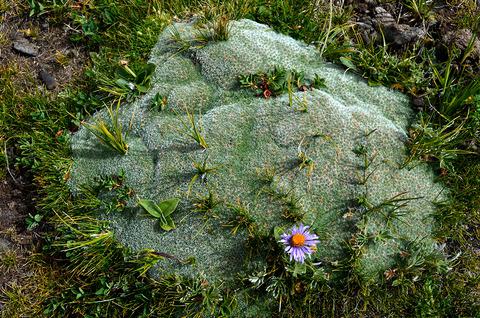当前位置:
X-MOL 学术
›
Funct. Ecol.
›
论文详情
Our official English website, www.x-mol.net, welcomes your
feedback! (Note: you will need to create a separate account there.)
Environmental controls override grazing effects on plant functional traits in Tibetan rangelands
Functional Ecology ( IF 4.6 ) Pub Date : 2019-12-20 , DOI: 10.1111/1365-2435.13492 Yun Jäschke 1 , Gwendolyn Heberling 2 , Karsten Wesche 1, 3, 4
Functional Ecology ( IF 4.6 ) Pub Date : 2019-12-20 , DOI: 10.1111/1365-2435.13492 Yun Jäschke 1 , Gwendolyn Heberling 2 , Karsten Wesche 1, 3, 4
Affiliation

|
Plant functional traits are key to predict community responses to abiotic and biotic disturbances. Grazing is the dominant land‐use form in drylands and alpine environments, especially in Central Asian rangelands. Here, we address grazing effects and their relative importance against environmental controls on plant traits. We sampled 14 plant functional traits, which are potentially sensitive to grazing, from 127 taxa distributed across three grassland types in Tibetan grasslands exposed to increasing levels of precipitation: steppe, steppe‐meadow and meadow. We performed principal components analysis and fourth‐corner analysis to explore the impacts of grazing and environment on multiple community‐weighted mean (CWM) traits. We also used generaliszed linear mixed models to test the effects of grazing and environment on each CWM trait, and on three dimensions of functional trait diversity, i.e. functional richness (FRic), evenness (FEve) and divergence (FDiv). In addition, we undertook a mini‐review of former studies on grazing effects on plant traits in Chinese grasslands. We found that CWM traits were mainly affected by climate and elevation rather than by grazing intensity. Only plant tissue C content was negatively affected by intensified grazing across grassland types. Plant growth form and life form were mainly influenced by elevation, while heights of canopy and inflorescence were controlled by temperature. Specific leaf area was positively correlated with precipitation and soil total N content in steppes, while plant tissue N content was only correlated to livestock dung cover. Regarding functional trait diversity, FDiv in steppe‐meadows and meadows, and FEve in meadows were reduced by grazing. Synthesis. Our results confirmed that environmental controls override grazing impact on CWM traits across Tibetan alpine grasslands. Most plants and their respective traits are adaptive to alpine climates as well as to grazing, and are thus hardly affected by locally intensified grazing intensity. In steppes, functional diversity is insensitive to grazing due to the combined stress of drought and grazing. However, in steppe‐meadows and meadows, grazing may affect ecosystem functioning, as shown by the reduced values of FDiv and FEve under more intense grazing. A free Plain Language Summary can be found within the Supporting Information of this article.
更新日期:2019-12-20











































 京公网安备 11010802027423号
京公网安备 11010802027423号